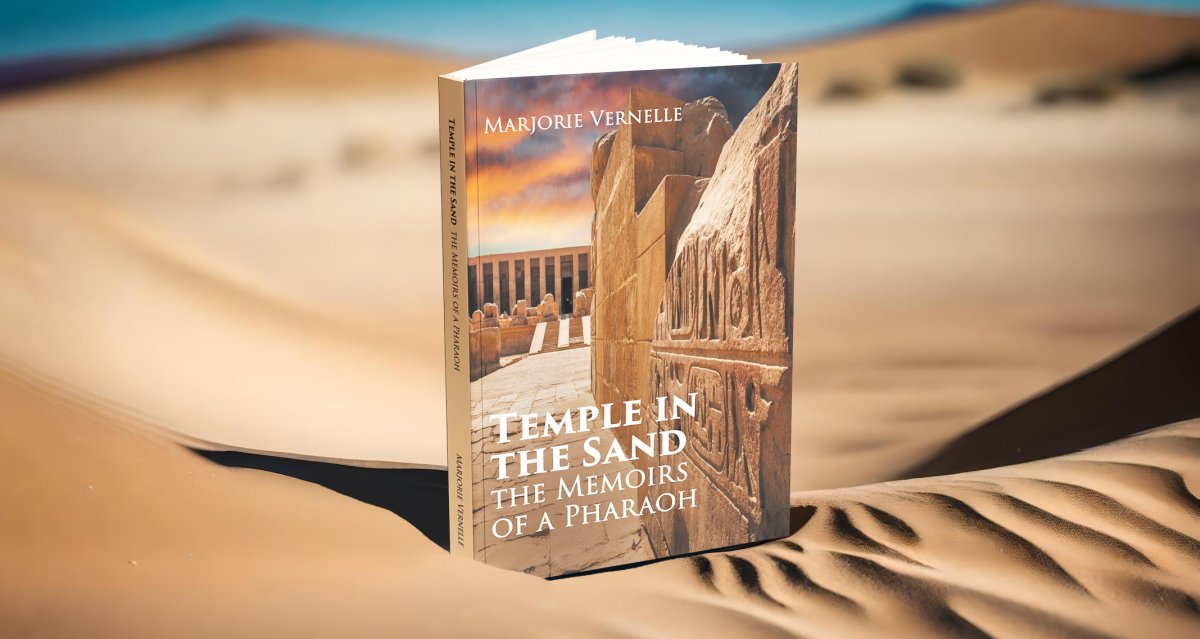Temple in the Sand by Marjorie Vernelle
The Memoirs of a Pharaoh
Temple in the Sand is a historical fiction novel that pays tribute to Pharaoh Seti I, exploring his reign, warrior spirit, and artistic soul. Set against the backdrop of ancient Egypt, the narrative revolves around the Temple of Seti in Abydos, where it's believed the Pharaoh kept a hidden diary.
Through an imaginative recreation of this diary, readers are transported to a time of pharaohs and magnificent architectural wonders, delving into the life of a king who was not born royal but earned the love and respect of his people through his extraordinary rulership and connection to the common folk.
Excerpt from Temple in the Sand © Copyright 2023 Marjorie Vernelle
The Opet Festival
The golden barques of Amun-Re, Mut, and Khonsu appeared. Each of these barques came with a chorus of priestesses singing as they marched in front of each god’s barque. The barques themselves were each carried by six strong priests, their shaven heads gleaming in the sunlight and their robes bleached so white that they nearly blinded the eye. Finally, it was the turn of the royal family to appear with our own entourage of chanting priestesses, dancers, and fanbearers. Thus, the whole ensemble headed down to the river to board the barges. Those were for the barques of the gods which, though shaped like ships, were always carried about and loaded on barges to go upriver to Luxor. The royals had our own barques, which actually floated on the waters of the river. These were covered in shiny yellow electrum and in some places gold itself. Each had two large paddle shaped oars fore and aft with experienced helmsmen to keep them a certain distance from the riverbank, while men hauled these vessels upriver against the current with long ropes of plaited papyrus.
The crowds lining the riverbanks were cheering, ululating, and straining to see the royal cortege. The horns and drums continued as there were new groups all along the river to give heart to the men who had to pull the barges with the gods on them and the barques with the royals upstream. The people began to beat their hands in a certain rhythm that matched the drums and the strain in the move-
ment of the men as they towed these vessels.
The energy of it was astounding and pervaded the whole scene including the vessels on the river. It wove us all into one gigantic tapestry that spoke of the power and glory of our land and its culture and history. The noise, the cheers, the songs, the horns, and the drums If there was anyone in the kingdom who did not believe in the wealth and power of this Ramesside Dynasty, that person was certainly not at the Opet
Festival, for it dazzled the eyes of all who beheld it.
My profession is online marketing and development (10+ years experience), check my latest mobile app called Upcoming or my Chrome extensions for ChatGPT. But my real passion is reading books both fiction and non-fiction. I have several favorite authors like James Redfield or Daniel Keyes. If I read a book I always want to find the best part of it, every book has its unique value.







